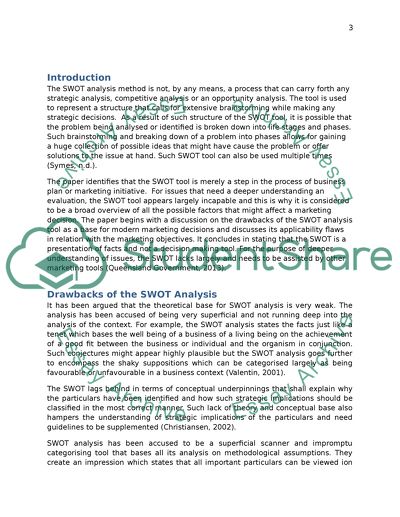Cite this document
(“Critically discuss 'SWOT analysis is deeply flawed and should not be Essay”, n.d.)
Retrieved from https://studentshare.org/marketing/1629653-critically-discuss-swot-analysis-is-deeply-flawed-and-should-not-be-applied-as-a-modern-marketing-tool
Retrieved from https://studentshare.org/marketing/1629653-critically-discuss-swot-analysis-is-deeply-flawed-and-should-not-be-applied-as-a-modern-marketing-tool
(Critically Discuss 'SWOT Analysis Is Deeply Flawed and Should Not Be Essay)
https://studentshare.org/marketing/1629653-critically-discuss-swot-analysis-is-deeply-flawed-and-should-not-be-applied-as-a-modern-marketing-tool.
https://studentshare.org/marketing/1629653-critically-discuss-swot-analysis-is-deeply-flawed-and-should-not-be-applied-as-a-modern-marketing-tool.
“Critically Discuss 'SWOT Analysis Is Deeply Flawed and Should Not Be Essay”, n.d. https://studentshare.org/marketing/1629653-critically-discuss-swot-analysis-is-deeply-flawed-and-should-not-be-applied-as-a-modern-marketing-tool.


